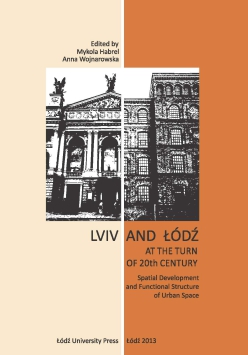Opis produktu
The attempt to make a comparative study of Lviv and Łódź in search of certain regularities seems at the first glimpse rather farfetched, because apparently there are rather few analogies between the city of Lviv with its long history and multifunctional tradition and the monofunctional, rather young, industrial city of Łódź. But deeper analysis shows that despite many differences in the course of the history of both cities, some common tendencies can be traced, such as dynamic demographic and spatial development in the second half of the 19th century based on introduction of railway transport, the building of socio-economic and spatial structures of these cities by multi-cultural local communities, and going through half-a-century period of centralized socialist economy after the Second World War. Lviv and Łódź regained political independence almost at the same time (1989 in Poland and 1991 in Ukraine) and entered the route of democratic development, undergoing political and socio-economic transformations during the last 20 years. As a result of these processes as well as the influence of globalization, today we can observe in Łódź and in Lviv similar problems and phenomena, influencing their spatial development and functional restructuring.
Lviv and Łódź currently have similar populations – above 700 000 inhabitants (Lviv – 757 300 in 2010 and Łódź – 722 022 in 2012), but they differ substantially regarding their city areas within administrative boundaries, and, consequently, average population density, which in Lviv is almost twice as high as in Łódź (4298 persons/sq. km in Lviv, compared with 2462 in Łódź). So we can conclude that Lviv, having an area of 171.01 sq. km, is a much more compact city than Łódź, which occupies an area of 293.25 sq. km.
After the Second World War both cities faced significant growth of population and area due to the development of the industrial function. During this time huge housing estates were constructed according to the modernist concepts adapted to the requirements of socialist economy, and isolated industrial zones. Strict zoning was introduced in urban planning of both cities. However, the spatial development of both cities was shaped by complex socio-economic processes, and despite the similarities they led to different results depending on the local specifics.
During the post-Soviet period in Lviv and the post-socialist period in Łódź there were analogical processes of deindustrialization and formation of new social stratification in new political conditions. These phenomena led to the need to undertake actions aimed at revitalization of post-industrial sites abandoned by production, and at mitigation of the spatial symptoms of social imbalance – enclaves of wealth and poverty ghettos. In both cities transport pressures have occurred, requiring solutions to improve the effectiveness of public transport and to restructure the traditional road system, especially within the historical cores and central areas of the cities. New built structures have appeared in both cities, erected by private investors, differing from those of the socialist era by their considerable individualization of forms and new technological solutions. As regards urban regeneration processes, the difference in the implementation scale is undoubtedly due to Polish membership in the EU, which since 2004 has been a major driving force through co-financing of urban regeneration projects. Still, both cities are lacking a comprehensive approach to urban regeneration, which is called integrated in the planning phase and envisages tasks of socio-economic character, but in most cases is implemented only in its spatial aspect. Another common problem is the lack of adequate social participation in revitalization processes.
In Łódź, as well as in Lviv, one of the key problems is protection of the cultural heritage, which, however, differs significantly – Lviv is a city which has a historic center of unique value, inscribed on the UNESCO World Heritage List, while the assets of Łódź in this field consist of historic post-industrial structures and Art-Nouveau architecture.
Although so different in their historical course of development, both cities encounter at the moment many similar problems and challenges, facing the necessity to create their future prosperity through exploiting their specific local potentials and to continue their best traditions of urban growth in all aspects – spatial, social, cultural and economic.
Anna Wojnarowska
Mykola Habrel



Opinie
Na razie brak recenzji produktów.